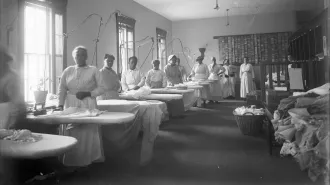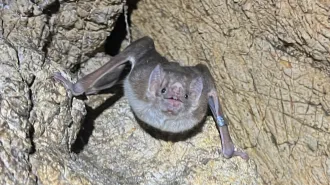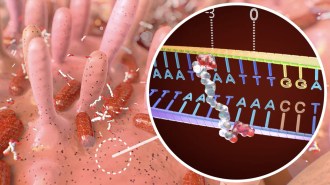Wet fingers always wrinkle in the same way
The folds follow the paths of blood vessels
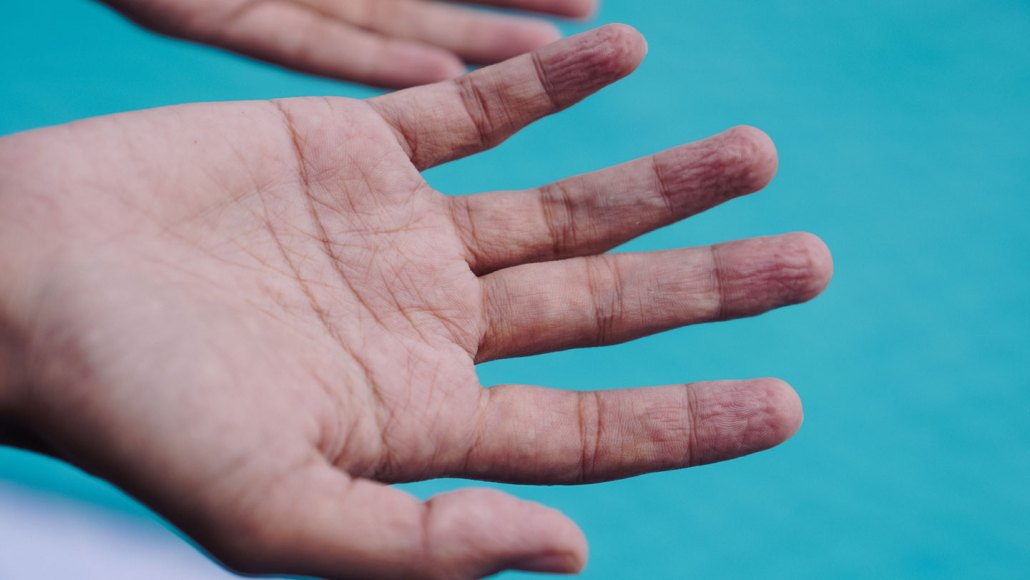
Finger wrinkle patterns induced by a long soak stay consistent over time, a new study suggests.
sellyhutapea/Getty Images
Summertime soaks in the pool often leave fingertips shriveled and pruney.
Each time someone goes for a dip, their digits wrinkle in the exact same patterns, researchers report in the May Journal of the Mechanical Behavior of Biomedical Materials. That’s because the folds follow the paths of blood vessels below the skin’s surface, which generally stay in place.
Many people think that fingers and toes wrinkle when wet because the skin swells when it absorbs water. But around 20 years ago, researchers discovered that the puckering comes from blood vessel constriction. A prolonged soak leads to water entering the skin and diluting the amount of salt in the tissue, which gets signaled to the brain via nerves. The brain then instructs stationary blood vessels to narrow, pulling in the anchored overlying skin in fingers and toes. It’s an evolutionary mechanism that boosts grip strength under water by creating texture.
Guy German, a biomedical engineer at Binghamton University in New York, wrote about why water makes skin shrivel for The Conversation. But follow-up questions from a reader stumped him: “Does it happen every time, and does it happen the same way?”
“I sat there, sitting with this [set of questions] going, ‘I really don’t know,’” German says.
He and his graduate student had three people submerge their right hands in water at 40° Celsius for 30 minutes. Immediately afterward, the researchers snapped photos of each pruney finger pad. Participants repeated the process at least 24 hours later.
Overlaying images of the same finger from both days revealed pairs of wrinkles that shared similar locations and shapes. Mathematical analysis of those paired-up folds indicated that the corresponding wrinkles matched each other almost perfectly.
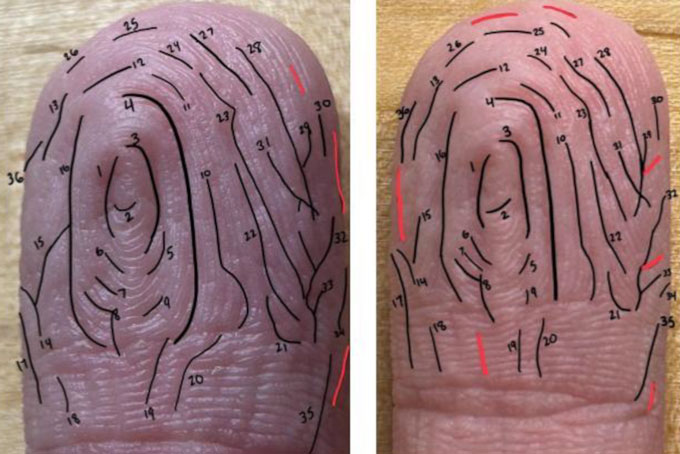
“Now the question that I would like to answer is, does that happen on the length scale of, say, a year or 10 years or 50 years?” German says. He’s not sure whether blood vessel arrangements in the digits remain the same over a lifetime like fingerprints do. If so, finger wrinkle patterns could someday help with biometric or forensic identification, he says.
“I do love the fact that the origin of this story came from just a simple, innocent question,” German says. “It opened up a huge door of what is essentially unknown science.”
